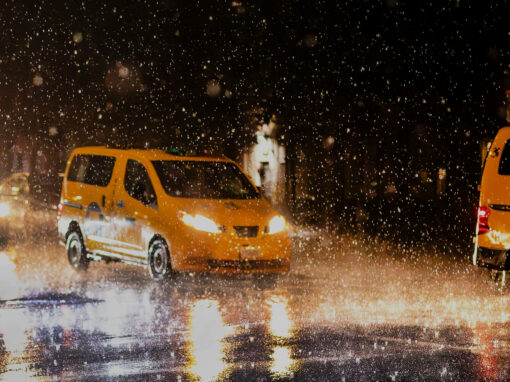If you are of a certain age, there is likely a phrase hiding in the back of your head.
Same Bat Time. Same Bat Channel.
Its origin is well known. The original Batman television show, which ran from 1966 to 1968 on the ABC network in the United States, usually ended with a cliffhanger. When would we find out what happens? When would we learn the fate of our beloved dynamic duo, Batman and Robin? Well, the narrative voice-over would say, tune in tomorrow: Same Bat Time. Same Bat Channel.
The phrase caught on.
“Daily Bat” by Sebastian Magnani
Self-published, www.sebastianmagnani.com, 2023
review by W. Scott Olsen
“See you tomorrow?” we might ask a colleague at the end of the day.
“Same Bat Time, Same Bat Place,” they might respond.
Even people far too young to have ever seen the original TV show know and use the phrase (albeit they could have watched reruns). As far as I know, it’s nowhere in any of the movies.
I am remembering this phrase because I have on my desk a wonderful, fun, sometimes ironic, sometimes sad, always playful new book called Daily Bat by Sebastian Magnani.
What if it wasn’t the Same Bat time? What if it wasn’t the Same Bat Channel? What if it were – different?

Daily Bat is based on an idea that’s nearly genius. What would Batman look like when he’s not in media res? An engaging complication arises when Batman, a culturally loaded symbolic character, the lonely everyman crime-fighter, the moralist, the angst-ridden wealthy elite, sits down, in costume, to read a newspaper or lingers at a hotel bar or reclines in a tanning bed.
The images in Daily Bat are brilliant, and I mean that both ways. The idea is brilliant – the notion of thematic and cultural-association juxtapositions – and the images are brilliant, filled with moody and high contract colors, filled with shadows and neon and luminance.

It would be possible for this book to become a one-trick pony: here’s an image of Batman in a funny place; here’s another picture of Batman in another funny place. But there’s depth to each of the images in Daily Bat, a kind of pathos that invites the viewer to linger and imagine not only the presence of Batman but, somehow, both oddly and wonderfully, the soul of Batman.
In an image called Cigar and Chess, Batman sits in what appears to be a small bar, a chess set inlaid into the small table in front of him. There are lines of light through the blinds on the window. There are dark shadows, cool tones on the ceiling, and warm tones from the lamp on the table. Batman is in a contemplative pose. And, while there are no pieces on the board, it’s easy to imagine the moves in his mind.

A series of images show Batman at a bar with titles like After Work I, Just a Drink, After Work II, and Cigar Lounge. The images are not of a partying Batman or even a desperate Batman. They are, instead, a kind of wedding between Wes Anderson and Edward Hopper. They have the Hopper-esque feel and the Anderson colors and framing.
Three images called Once Upon a Time Red, Once Upon a Time Yellow, and Once Upon a Time Green show Batman sitting in a movie theater, alone, with a bucket of popcorn and soda in hand. He is surrounded by the visible seats in an empty theater. The images are also identical, except the color palettes have changed. These images, along with others, take Batman into meta-territory. Now we have images about images about Batman. The result is both lonely and strong. Alone, the color palettes of the three images are different. They work beautifully. As individual images, but also as a series.



There is often a playful side to these images. One called Bittersweet shows Batman in a cafe being served a single apple by a female-looking robot. (Deep reference here—the image is a riff on Adam and Eve and the apple, and the original Batman on TV was played by an actor named Adam West.)
There is one called Hide and Seek, where Batman is appearing from behind the palm tree, and another one called McBat, where Batman leans against a black Porsche outside a McDonald’s restaurant.

Viewing each of these images is, at first blush, fun. Pleasing, yes, but more energetic than that. These images are a riot, every single one of them a humorous approach to an icon. And yet, when you linger on all of them and you realize how alone Batman must have been, the images take on a kind of sadness. The sweet kind of sadness that makes you want to say stay a while. You could call it sympathy, empathy, or simply irony. These images, through their playfulness, actually become an articulation of Batman’s heart.

According to the book Forward, “The Daily Bat captures the brooding superhero taking some time off from saving the world to enjoy some of the simpler things in life. Sporting a relaxed yet pensive mood, we see the caped crusader in the context of our normal, everyday reality, having a milkshake at a diner, reading a newspaper, and enjoying a brandy in a bar. He even has time to work out at the gym and go golfing… Somber and contemplative in ambiance yet wind whimsical in concept, the images stand out in their purposeful dissonance, made more pronounced by the juxtaposition between the protagonist’s dark figure and the vibrant colors of his surroundings…Who better suited to embody life’s contradictions than a man who effortlessly shifts between wealthy playboy, philanthropist, and industrialist to masked crimefighting hero, a mysterious, deeply emotional human character with a complex background?”
Daily Bat is one of those art books that celebrates nostalgia as well as a new and nuanced vision. The images are masterful at every level.
According to the information in the back of the book, “Sebastian Magnani is a Zurich-based photographer known for his intimate portraits and his masterful use of light and color to create emotional scenes. His interest in photography arose while completing an apprenticeship in media design, turning a passionate hobby into a full-time profession in 2011 after five years of creative work at an advertising agency. He has been working as a photographer ever since, developing various artistic projects and winning numerous international awards.”

A note from FRAMES: Please let us know if you have a forthcoming or recently published photography book.




